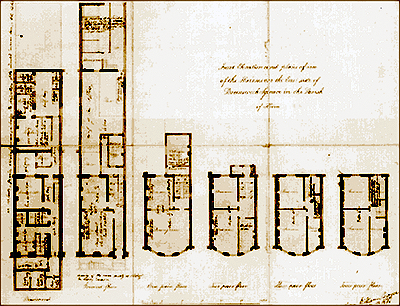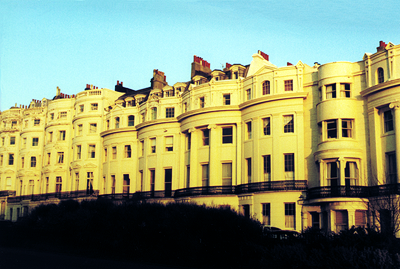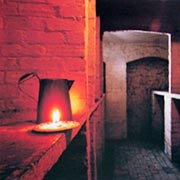Charles Augustin Busby
The Regency Architect of Brighton & Hove
Charles Augustin Busby was born in 1786 to the composer, musician Dr Thomas Busby and Priscilla (née Angier). Residents of London, the family were socially and politically radical. They moved in the social circle of people such as William Blake, Byron, Merlin the Ingenius Mechanic, and Lord and Lady Holland.
Busby showed an aptitude for architecture at an early age, and was articled to the office of Daniel Asher Alexander, one of the Regency's great architect engineers. In addition to his pupillage with Alexander, Busby benefited from attendance at the Royal Academy Schools, graduating in 1807 with a gold medal.
In 1817-19 Busby lived and studied in North America, resulting in a reverse of the then current trend of East to West influence. By 1822, back in UK he established contact with Thomas Read Kemp, one time Brighton MP and one of the richest men in Sussex. In 1823 Busby undertook design of the Kemp Town scheme on Kemp’s behalf, and through 1823-4 was approached by many other Brightonians to undertake designs.
lived and studied in North America, resulting in a reverse of the then current trend of East to West influence. By 1822, back in UK he established contact with Thomas Read Kemp, one time Brighton MP and one of the richest men in Sussex. In 1823 Busby undertook design of the Kemp Town scheme on Kemp’s behalf, and through 1823-4 was approached by many other Brightonians to undertake designs.
In late 1824 Busby signed a Memorandum of Agreement with the Reverend Thomas Scutt, landowner of 300+ acres to the West of Brighton, much within the parish of Hove, to develop some 35 acres of land as a Regency new town. Christened Brunswick Town, this represents Busby’s greatest architectural achievement, and was developed between 1824 and 1834, the time of his death.

The period through which Busby developed Brunswick Town saw a period of economic good times degenerate to severe economic depression. Busby, along with many of the speculators funding the Brunswick development, suffered bankruptcy. Perhaps it was the stain of this that caused Victorians to rapidly forget Busby's contribution to the development of Brighton and Hove. The name of this important architect, who designed more of the architecture that we have protected with Listing than any other architect, was largely forgotten until the middle of the 20th century when Anthony Dale brought his name to public attention in his seminal work Fashionable Brighton. In the last couple of years a blue plaque has been erected on the house in Lansdowne Place where Busby spent the final years of his life - a long over-due recognition of the creative talent that designed the glorious Regency Brighton we see around us today.



